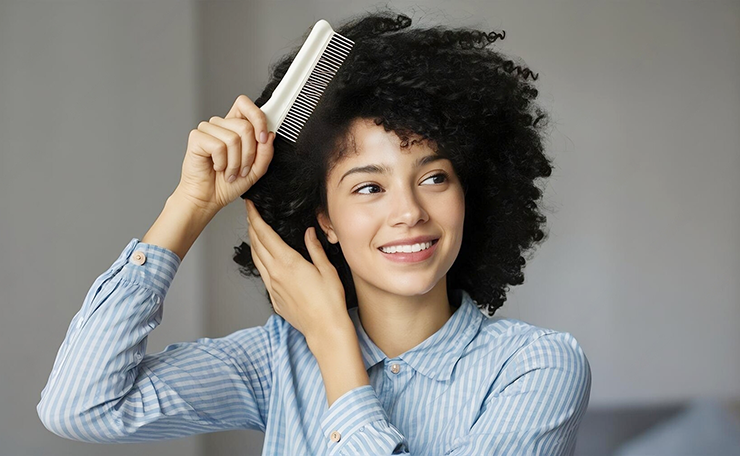
When it comes to hair care, the tools you use play a pivotal role in maintaining healthy locks. Two staples in every grooming arsenal are the hairbrush and the comb. But which one is better for your hair? The answer depends on your hair type, texture, and styling needs. Let’s break down the differences, benefits, and ideal uses for each tool to help you make an informed choice.
The Hairbrush: Versatile and Gentle
Hairbrushes are a go-to tool for many, thanks to their versatility. They come in various styles, including paddle brushes, round brushes, and vented brushes, each designed for specific purposes.
Benefits of a Hairbrush:
Detangling: Hairbrushes, especially those with flexible bristles, are excellent for detangling long, thick, or wavy hair without causing excessive breakage.
Scalp Stimulation: Brushing your hair stimulates the scalp, promoting blood circulation, which may encourage hair growth.
Smoothing and Styling: Brushes are ideal for smoothing hair, reducing frizz, and achieving sleek, polished looks. Round brushes, in particular, are great for creating volume and curls during blow-drying.
Oil Distribution: A brush helps distribute natural scalp oils down the hair shaft, keeping your strands moisturized and shiny.
Best for:
Thick, wavy, or curly hair types
Daily detangling
Styling and blow-drying
However, brushing too vigorously can cause damage, especially for fine or brittle hair. To minimize this, opt for brushes with soft, natural bristles or those designed specifically for sensitive scalps.
The Comb: Precision and Control
Combs, on the other hand, offer more precision and control, making them ideal for specific tasks like parting, styling, and detangling wet hair. Combs are typically categorized by their teeth spacing—wide-tooth and fine-tooth.
Benefits of a Comb:
Detangling Wet Hair: A wide-tooth comb is perfect for detangling wet hair without stretching or breaking it. Unlike brushes, which can tug at wet strands, combs are gentler on fragile hair.
Styling Precision: For intricate hairstyles, a fine-tooth comb provides the precision needed for clean parts and detailed work.
Minimizing Breakage: Combs are often less abrasive than brushes, especially when working with knots.
Portability: Combs are compact and easy to carry, making them convenient for on-the-go touch-ups.
Best for:
Fine, straight, or short hair types
Detangling wet hair
Creating neat hairstyles
Despite their many benefits, combs are not as effective as brushes for tasks like distributing oils or smoothing large sections of hair.
Choosing the Right Tool for Your Hair
The choice between a hairbrush and a comb often comes down to your hair’s unique needs and your styling goals. Here are some quick guidelines to help you decide:
Hair Type Matters:
If you have thick, curly, or wavy hair, a hairbrush (or a combination of a brush and wide-tooth comb) might be more effective.
For fine or straight hair, a comb can offer better control without overwhelming delicate strands.
Wet or Dry Hair:
Use a wide-tooth comb for detangling wet hair to prevent breakage.
A brush works better on dry hair for smoothing and styling.
Styling Needs:
For blow-drying or creating volume, a round brush is essential.
For precision hairstyles or touch-ups, a fine-tooth comb is indispensable.
Combining Both for Optimal Hair Care
Instead of choosing just one, consider incorporating both tools into your routine. For example:
Start with a wide-tooth comb to detangle wet hair after washing.
Use a hairbrush to style and smooth dry hair or distribute natural oils.
Both hairbrushes and combs are essential tools, each with unique advantages. The key is to choose the right one based on your hair type and specific needs. By understanding how to use these tools effectively, you can keep your hair healthy, stylish, and free from unnecessary damage.
The post Hairbrush vs. Comb: Choosing the Right Tool for You appeared first on The Fashiongton Post.
